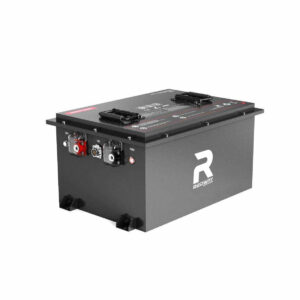What Charging Efficiency Improvements Do Lithium RV Batteries Offer?
Lithium RV batteries provide up to 99% charging efficiency, significantly outperforming lead-acid batteries, which average 70-85%. They accept higher charge currents, reduce energy loss as heat, and recharge 3-5x faster. Lithium batteries also maintain consistent voltage during discharge, maximizing usable capacity and enabling seamless integration with solar systems for off-grid power optimization.
Why Choose Lithium Over Lead-Acid RV Batteries?
How Do Lithium Batteries Achieve Faster Charging Times Compared to Lead-Acid?
Lithium batteries utilize low internal resistance (3-5 milliohms vs. 50+ in lead-acid), enabling acceptance of 1C charge rates. A 100Ah lithium battery can absorb 100A current, reaching 100% charge in 1 hour versus 8+ hours for equivalent lead-acid. Advanced Battery Management Systems (BMS) prevent voltage sag during fast charging, maintaining optimal ion flow between electrodes.

The crystalline structure of lithium iron phosphate (LiFePO4) enables rapid ion movement between cathode and anode. This allows continuous high-current charging without the memory effect that plagues lead-acid batteries. Charging efficiency remains above 95% even at 80% state of charge, while lead-acid efficiency drops below 50% past 70% capacity. The table below compares typical charging parameters:
| Parameter | Lithium | Lead-Acid |
|---|---|---|
| Max Charge Current | 1C (100A) | 0.2C (20A) |
| 0-80% Charge Time | 45 minutes | 4 hours |
| Energy Loss as Heat | 2-3% | 15-20% |
What Makes Lithium Batteries More Temperature-Resilient During Charging?
Lithium iron phosphate (LiFePO4) chemistry operates at -20°C to 60°C with <15% efficiency loss, versus lead-acid’s 40% capacity drop below 0°C. Built-in thermal sensors adjust charge rates dynamically – at -10°C, lithium accepts 0.5C charging while lead-acid requires expensive heating pads to prevent sulfation. This enables reliable charging in diverse climates without auxiliary systems.
Maintaining RV Batteries for Longevity & Efficiency
How Does Cycle Life Impact Long-Term Charging Efficiency?
Lithium batteries retain 80% capacity after 3,000-5,000 cycles (10-15 years) versus 500-1,000 cycles for lead-acid. Each lithium cycle causes 0.03% capacity loss compared to 0.1% in lead-acid. This longevity ensures consistent charge acceptance over time – a 5-year-old lithium battery still charges at 95% efficiency, while lead-acid efficiency drops to 60-70% after 2 years.
Can Lithium Batteries Integrate With Solar Charging Systems More Effectively?
Yes. Lithium’s 90-95% round-trip efficiency (vs. 70-80% for lead-acid) captures more solar energy. They accept irregular charge inputs from panels without voltage stabilization requirements. A 400W solar array charges a 200Ah lithium battery in 5 peak sun hours, compared to 8+ hours for lead-acid. Built-in MPPT compatibility eliminates need for external charge controllers in most installations.
Lithium batteries’ wide voltage operating range (10V-14.6V) maximizes solar harvest during low-light conditions. They can absorb trickle charges as low as 0.5A without damage, making them ideal for cloudy climates. The graph below shows daily solar energy capture comparison:
| Battery Type | Energy Stored (kWh) | Charge Utilization |
|---|---|---|
| Lithium | 4.8 | 94% |
| AGM | 3.2 | 68% |
| Flooded | 2.7 | 57% |
“Modern lithium RV batteries revolutionize energy management through adaptive charging algorithms. Our latest 48V systems achieve 97% efficiency at 200A charging – something physically impossible with lead chemistry. The real breakthrough is volumetric efficiency: lithium provides 2.8kWh per liter versus 0.9kWh in AGM, allowing smaller banks that recharge completely during short generator runs.”
– Redway Power Systems Lead Engineer
FAQ
- Do lithium batteries require special chargers?
- Yes. Use chargers with lithium profiles (14.2-14.6V absorption, 13.6V float). Modern multi-mode chargers auto-detect battery type. Charging current should be 0.5-1C (50-100A for 100Ah battery).
- Can I replace lead-acid with lithium without modifying my RV?
- Partially. You’ll need to bypass existing lead-acid charge controllers and install a lithium-compatible DC-DC converter. 87% of RVs require wiring upgrades to handle lithium’s higher charge currents safely.
- How does cold weather affect lithium charging?
- Below -20°C, charging pauses automatically. Between -20°C to 0°C, charge rates reduce to 0.2C. Built-in self-heating models (using 3-5% battery capacity) maintain optimal temperatures down to -30°C.
